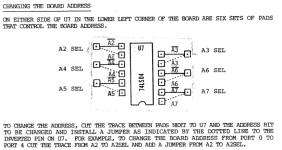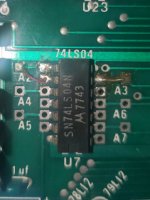deramp5113
Veteran Member
At what address is the board strapped? We have to know that to get started. The “External Com” command uses I/O address 4. PC2FLOP uses I/O address 2 or 4.
The 8251 requires no handshake lines to receive and requires its CTS pin asserted in order to transmit. Based on the picture you sent, your computer is wired as DCE and would connect to a terminal with a straight through DB25 cable. DTR pin 20 from the terminal is connected to the 8251 CTS input. Normally, a 4.7K pull-up on the Bitstreamer pulls up CTS if nothing is driving it.
The 8251 requires a multi-byte init sequence before it will work. This is done by the monitor PROM for you if the board is at a standard address.
Mike
The 8251 requires no handshake lines to receive and requires its CTS pin asserted in order to transmit. Based on the picture you sent, your computer is wired as DCE and would connect to a terminal with a straight through DB25 cable. DTR pin 20 from the terminal is connected to the 8251 CTS input. Normally, a 4.7K pull-up on the Bitstreamer pulls up CTS if nothing is driving it.
The 8251 requires a multi-byte init sequence before it will work. This is done by the monitor PROM for you if the board is at a standard address.
Mike


